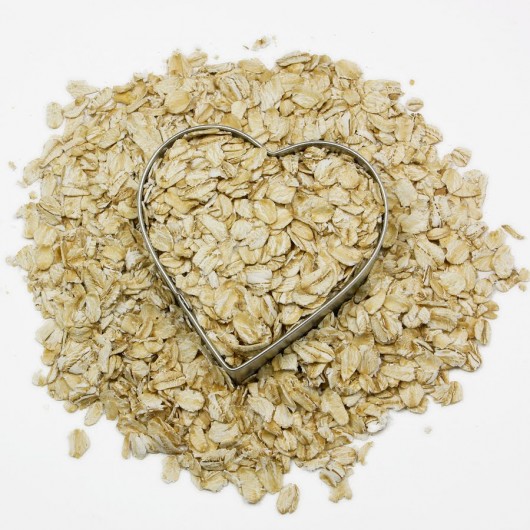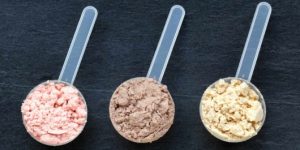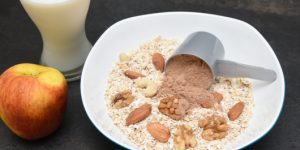The sweet tooth is known worldwide as the enemy of dieters. Instead of avoiding and wrestling with your favourite treats, indulge in a healthier version by using a few of our tips!
[spoiler title=”Summary: Have Your Cake And Eat It Too” style=”fancy”]If you are trying to maintain a lean and healthy lifestyle, it does not mean that you have to avoid your favourite desserts entirely. Instead, altering specific aspects of your recipes just a little will offer you the freedom to eat what you want. Decreasing sugar and fat while increasing fiber will give your delicious favourites the healthy twist you deserve!
[/spoiler]
Many people trying to watch their weight find that the main barrier preventing them from reaching goals is their sweet tooth. Cakes, pastries and other sweet goodies can put a large dent in even the best intentions. At the same time, life is too short to go without your favourite foods and as soon as you totally cut out a specific treat from your diet you’ll only want it more! That’s why we’ve put together some tips to help you enjoy your favourite baked treats and still keep your waistline in check.
Decrease Sugar
Even though sugar adds on so many additional calories, it is possible to decrease the sugar content of your baked goods without losing delicious taste or ruining the texture.
If your recipe calls for 1 cup of sugar, try replacing some with healthier alternatives. Some replacements we enjoy are:
- ½ cup of sugar with ½ cup of unsweetened applesauce
- 1/3 cup of sugar with 1/3 cup of grated apple (this is great in texture-friendly recipes like bran muffins or cookies)
- ½ cup of sugar with 1 tsp of vanilla extract
- ½ cup of sugar with ½ cup of mashed banana
- 1 cup of sugar with ½ cup of xylitol
Increase Fibre
 Fibre is important not only for digestive health, but also makes your meal more filling and satisfying. Therefore, try upping the fibre in your baking to create a healthier treat:
Fibre is important not only for digestive health, but also makes your meal more filling and satisfying. Therefore, try upping the fibre in your baking to create a healthier treat:
- Replace 1/3 of the flour in baking with oatmeal
Note: When adding oatmeal to a baking recipe, extra baking soda and baking powder is needed because oatmeal can weigh down the final product. As a general rule, increase the baking soda by 1.5 times and add an additional 15ml of baking powder, even if the original recipe does not call for baking powder.
- Fibre increases can be great for more than just desserts. Lentils, beans and other legumes are an excellent, fibre-rich, cost-effective way to reduce the glycaemic index of a dish while increasing its nutritional value. Legumes also help to bind a dish in which the fat content has been reduced. You can also add legumes to stews, pasta dishes (e.g spaghetti bolognaise), quiches, casseroles, soups, salads, etc.
Decrease Fat
 Fat can have a negative effect on your heart health, your cancer risk and your weight. Most often, fat is the unhealthiest aspect of a baked good. Therefore, it does require some careful manipulation of your recipe to ensure that you can reduce the fat content without ending up with a dry, bland result. Here are some tips on how to decrease the fat content of your recipe, while keeping your baked goods moist and fluffy:
Fat can have a negative effect on your heart health, your cancer risk and your weight. Most often, fat is the unhealthiest aspect of a baked good. Therefore, it does require some careful manipulation of your recipe to ensure that you can reduce the fat content without ending up with a dry, bland result. Here are some tips on how to decrease the fat content of your recipe, while keeping your baked goods moist and fluffy:
- Always use the lowest-fat milk option where possible. When the recipe calls for milk, use fat free or skim milk. Ultra Heat Treated (UHT) skim or fat free milk is a better option in recipes as it is creamier than fresh milk while at the same time retains the same low calorie and fat content.
- When a recipe calls for margarine AND oil, often one can be cut out without affecting the quality of the finished product. For example, in the case of a quiche crust, it wouldn’t be necessary to have both margarine and oil. Instead, omit the oil and keep the margarine to rub into the flour.
- Replace cream with the same volume of low-fat evaporated milk
- Replace 1/2 of the oil in a recipe with low-fat yoghurt
- If a recipe calls for cheese as a topping, you are in control of the amount. Often, half of the cheese called for in the recipe is enough to cover the dish. Use a low-fat cheese for doubled improvement.
- When a recipe calls for frying, only use enough oil to coat the bottom of the pan. Also, it is important to make sure that the oil is very hot before food is added to the pan, so that the food absorbs less oil and cooks quicker.
- Note: In cases where the fat (such as oil) is reduced, it is necessary to add an extra egg white for binding purposes.
With these tips, you can keep your body lean and healthy without disappointing your sweet tooth.
Happy Baking!



